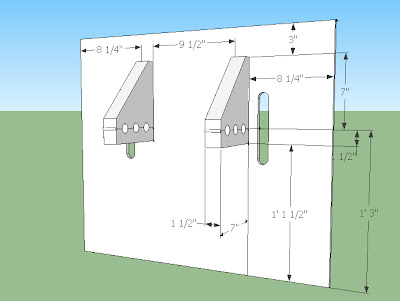If you are an avid backpacker, then you know about the big three. The big three are (typically) the heaviest items that you take with you on the trail, i.e., your backpack, sleeping bag and shelter/tent. If you want to lighten your load, they are the best places to start.
When I looked into going light, I saw that I would benefit most from a different tent. I had been using a conventional tent that weighed in at around five and a half pounds -- not a back-breaker, but I thought I could save a pound or two with a new tent. After looking at a number of different designs, I was drawn to the
Six Moon Designs' Lunar Duo and the
Nemo Meta 2P because of their simplicity and aesthetic appeal. Those two tents also met my only "must haves": (1) they fit two people and (2) they were fully enclosed tents. I backpack with my fiancee so any tarp shenanigans are out of the question.
During that time, I had also been poking around
BackpackingLight.com's "do it yourself" forum. After some research and consideration, I figured making my own tent would be a doable project.
The first step was to draw up the design. I used Google's
SketchUp and it was perfectly fine for my purpose. Here's what I came up with:
Next, I went off to Ebay and snagged most the important materials: silnylon and no-see-um mesh. Here's the breakdown of materials and components:
- 10 yards of 1.1 oz silnyon - $55.00 + $5.50 shipping
- 10 yards of no-see-um/mosquito tent netting - $17.95 + $5.00 shipping
- 2 x 6 feet sleeping bag zippers - $10
- Permatex Flowable Silicone Windshield Seal (to seal the seams on the tents and fix minor nicks) - $4.99
- Webbing/rope - free scraps.
So the entire cost of materials was a hair below $100, compared with $310 for the Lunar Duo and $400 for the Meta 2P.
Construction was fairly straight forward. As you cans see from my drawings, I chose not to incorporate catenary curves in the design, which made it a lot easier to sew. The most important thing about sewing is to make sure the pieces of fabric are folded over before being sewn together for additional strength, like so:
Another thing to remember is to reinforce all loading points, as shown below (thanks to
Henry Shires):
Once completed, the seams need to be sealed using a silicone-based sealant. My personal preference is to use Permatex Flowable Silicone, which can be purchased at any auto-supply store. It's primarily used to seal windshield wipers, but it works great for tents because it's just the right consistency -- you don't need to dilute it with water or anything. I also use it to fix pinprick holes.
After a number of seasons on the trail, I'm very happy with the tent and my design. At 38 oz, it's reasonably light. The tent is also very spacious -- plenty of room for two and maybe three if in a pinch. The double entries and vestibules are great for accessing your items and leaving the tent without disturbing your partner. Here are a couple pictures of it on the trail:
Please feel free to ask me any questions if you'd like detail on any part of this project.













.jpg)











